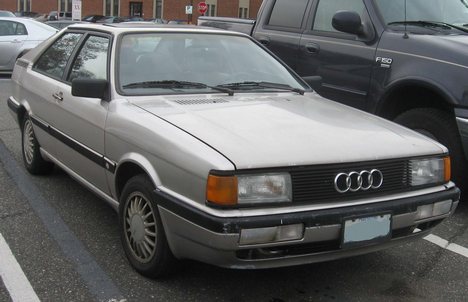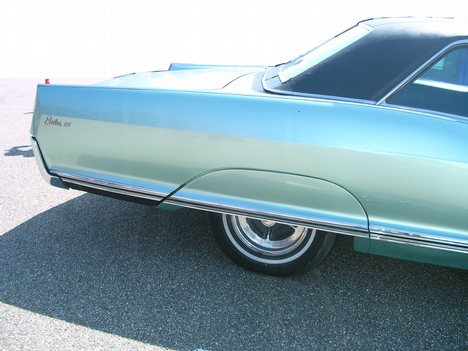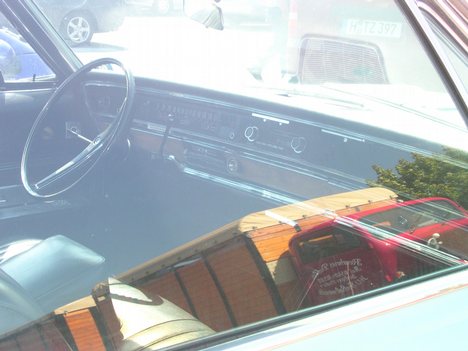
- Order:
- Duration: 4:12
- Published: 28 Oct 2006
- Uploaded: 20 Jul 2011
- Author: tefsandau



![[coupé décalé] ARAFAT DJ - Kpangor pour bouger [coupé décalé] ARAFAT DJ - Kpangor pour bouger](http://web.archive.org./web/20110731071613im_/http://i.ytimg.com/vi/2zFfTuen7EQ/0.jpg)



























































A coupé or coupe (from the French verb couper, to cut) is a closed car body style (permanently attached fixed roof), the precise definition of which varies from manufacturer to manufacturer, and over time. Coupés are often hardtopped sports cars or sporty variants of sedan (saloon) body styles, with doors commonly reduced from four to two, and a close-coupled interior (i.e., the rear seat placed further forward than in a standard sedan) offering either two seats or 2+2 seating (space for two passengers in the front and two occasional passengers or children in the rear). Before the days of motorized vehicles, the word referred to the front or after compartment of a Continental stagecoach.
During the 1920s, the Society of Automobile Engineers suggested nomenclature for closed cars that included the following: ;Coupelet: A small car seating two or three with a folding top and full height doors with fully retractable windows. ;Coupé: An enclosed car operated from the inside with seats for two or three and sometimes a backward-facing fourth seat. ;Convertible coupé: A roadster with a removable coupé roof.
Through the 1950s opening-roof convertible automobiles were sometimes called drop-head coupés, but since the 1960s the term coupé has generally been applied exclusively to fixed-head models. Coupés generally have two doors, although automobile makers have offered four-door coupés and three and five-door hatchback coupés. Modern coupés often have the styling feature of frameless doors, with the window glass sealing directly against a weather-strip on the main body.
The Society of Automotive Engineers (SAE) distinguishes a coupé from a sedan (saloon) primarily by interior volume; SAE standard J1100 defines a coupé as a fixed-roof automobile with less than of rear interior volume. A car with a greater interior volume is technically a two-door sedan, not a coupé, even if it has only two doors. By this standard, the Chevrolet Monte Carlo, Ferrari 612 Scaglietti, and Mercedes-Benz CL-Class coupés are all two-door sedans. Only a few sources, however (including the magazine Car and Driver), use the two-door sedan label in this manner. Some car manufacturers may nonetheless choose to use the word coupé (or coupe) to describe such a model (e.g., the Cadillac Coupe de Ville).
Alternatively, a coupé is often distinguished from a two-door sedan by the lack of a B pillar to support the roof. Sedans have an A pillar forward at the windscreen, a B pillar aft of the door, and a C pillar defining the aftermost roof support at the rear window. Thus with all side-windows down, a coupé would appear windowless from the A to the C pillars. These fixed-roof models are described as a hardtop or pillarless coupé. Though, to confuse things even further, there are many hardtop/pillarless two and four door sedans. Targa top, or just 'T'-top models are a variation on the convertible design, where the roof centre section can be removed, in one or two sections, leaving the rest of the roof in place. Yet another variation on the convertible or drop-head coupé is the fully retractable hardtop. In this form the car has all the adantages of fixed-head vehicle but, at the touch of a button, the entire roof lifts off, folds and stows away in the trunk (boot). Though retractables were tried many years ago by Peugeot, in Europe and Ford, in the US, with the Fairlaine Skyliner, it is only in the 21st century that there has been an explosion in the popularity of this bodystyle.
During the 20th century, the term coupé was applied to various close-coupled (rear seat that is located further forward than usual and the front seat further back than usual) automobiles.
Manufacturers have used the term coupé in several varieties, including: ;Club coupé: A coupé with a larger rear seat, which would today be called a two-door sedan. ;Business coupé: A coupé with no rear seat or a removable rear seat intended for traveling salespeople and other vendors who would be carrying their wares with them. ;Opéra coupé: A coupé de-ville with a high roofed passenger compartment such that the owners could be driven to the opera without the need to remove their large hats. These often had 'occasional' seats that folded for use by children or extra passengers, and allowed easy passage to the rear seats. These cars most closely approximated a motorised version of the original horse-drawn coupé. Often, they would have solid rear-quarter panels, with small, circular windows, to enable the occupants to see out without being seen. These opera windows were revived on many US automobiles during the 1970s and early 1980s. ;Sports coupé or berlinetta: A body with a sloping roof, sometimes sloping downward gradually in the rear in the manner known as fastback. ;Four-door coupé: A sedan with classic coupé-like proportions. The designation was first applied to a low-roof model of the Rover P5 from 1962 until 1973, but was revived by the 2005 Mercedes-Benz CLS, as well as other models including the 1992 Infiniti J30, the 2008 Volkswagen Passat CC, and the 2009 Jaguar XJ. However, the low roof design reduces back seat passenger access and headroom. ;Quad coupé: Quad coupé is a marketing name for cars with one or two small rear doors with no B pillar. ;Combi coupé: Combi coupé is a marketing term used by Saab for a car body similar to the liftback.
With the growing popularity of the pillarless hardtop during the 1950s some automakers used the term coupé to refer to hardtop (rigid, rather than canvas, automobile roof) models and reserved the term sedan for their models with a B pillar. This definition was by no means universal, and has largely fallen out of use with near-demise of the hardtop. Similarly, a Rover P5 saloon model came in a body style with a lower roof that was called a coupé. Technically, it was cut, as the original definition required, but it was not a shorter car body.
Today coupé has become more of a marketing term for automotive manufacturers, than a fact of the vehicle's design and technical makeup. The AMC Matador coupe of the 1970s had a unique design sharing almost nothing with the 4-door versions.
Even 2-door cars with a backseat are now being referred to as "sedans" in which the terms "coupe" and "sedan" are used interchangeably. Two-door sedans with front bench seating have phased out with the late-90s Chevrolet Monte Carlo being the last model to offer it.
However, 2-door cars in general have fallen in popularity, with the popular exception of convertibles and 2-seat roadsters. Sedans, pickup trucks and SUVs/station wagons have had fewer 2-door models (especially ones with backseats) in recent years since the cost of 4-door cars has gone down along with engineering to ease access to the back seat area.
Coupes Category:Car classifications Category:Car body styles Category:French loanwords
This text is licensed under the Creative Commons CC-BY-SA License. This text was originally published on Wikipedia and was developed by the Wikipedia community.
